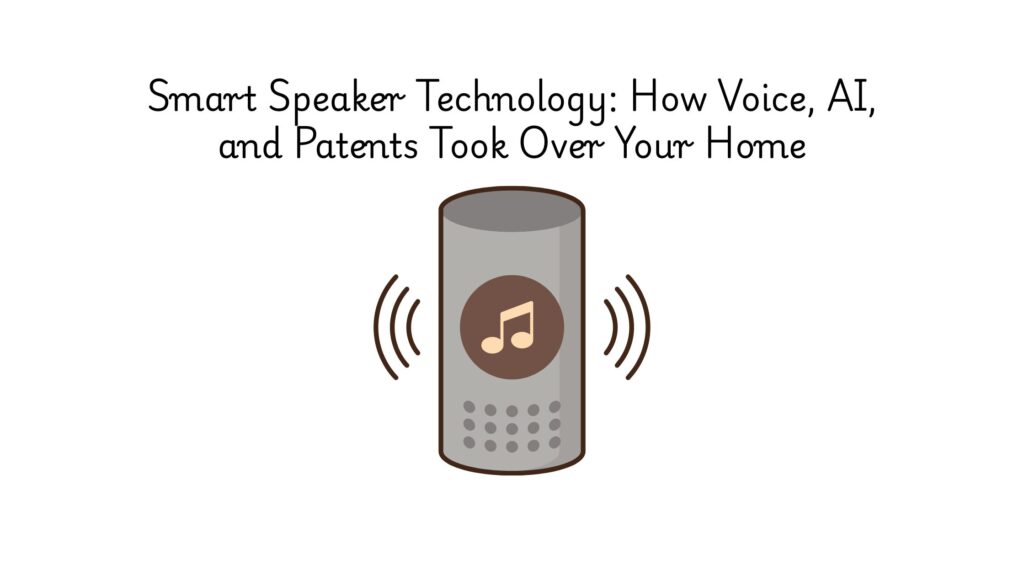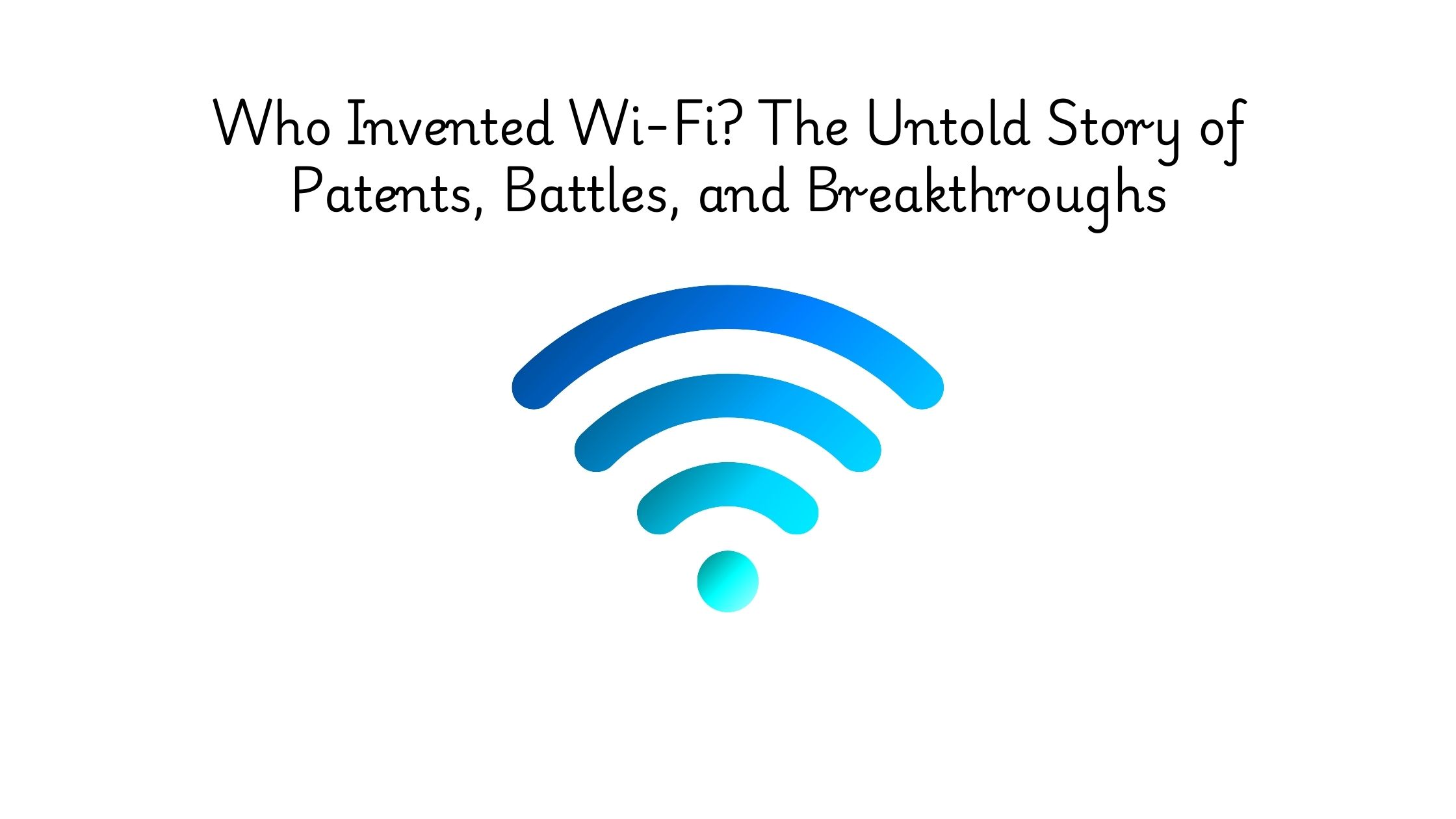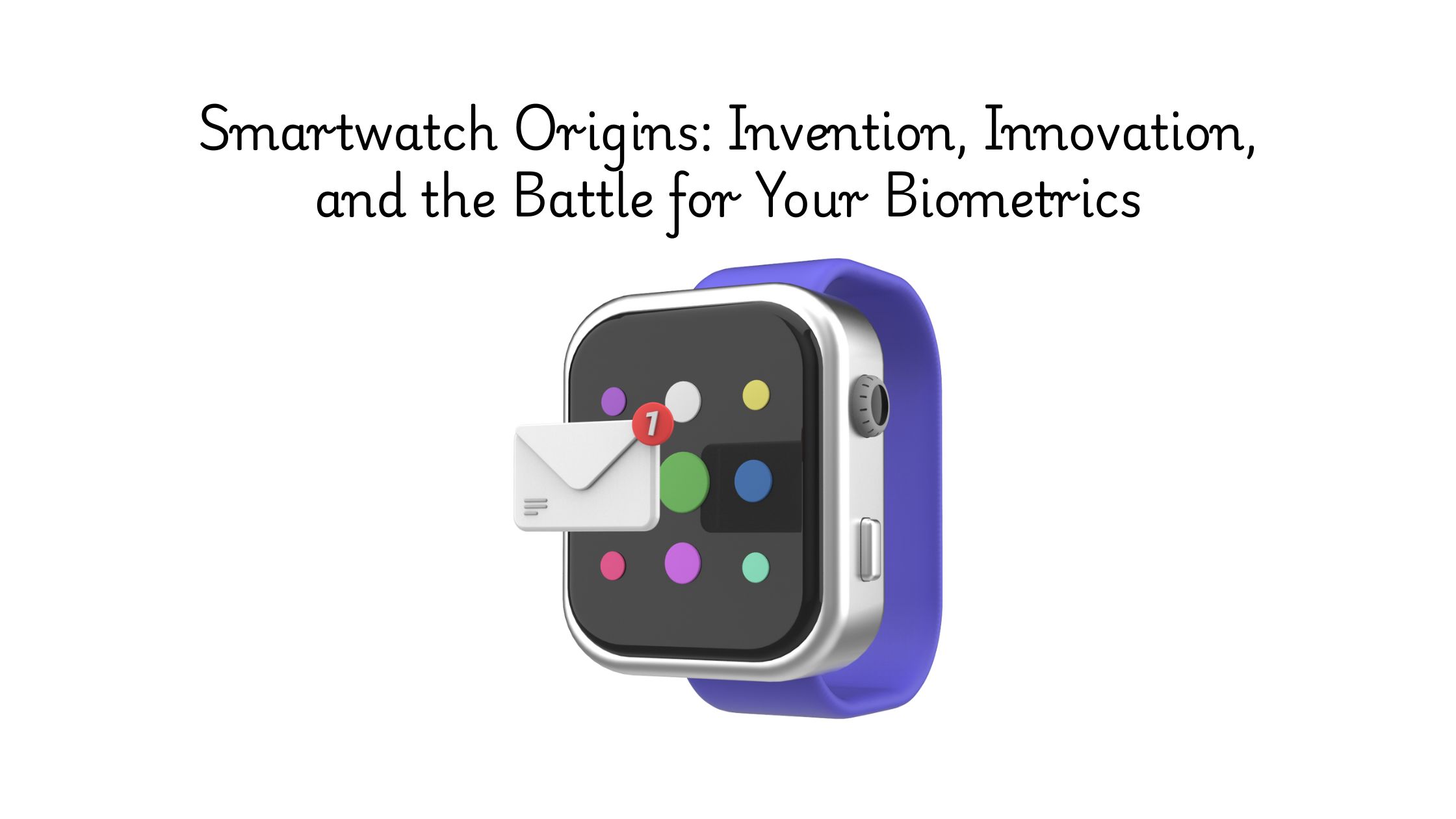You probably asked your smart speaker something this week. Maybe it was the weather. A playlist. A timer. Or a random question at 2 a.m. that felt easier to ask Alexa than type.
But smart speaker technology isn’t just a convenience; it’s one of the fastest-adopted hardware categories in consumer tech history. And its origin story isn’t as clear as it sounds.
Was it Amazon that invented it? Apple? Google? Not quite.
The real story behind smart speakers is a dense mix of speech recognition breakthroughs, AI-driven intent engines, far-field microphones, and a patent race that quietly shaped the devices now sitting in hundreds of millions of homes.
In this article, we’ll explain how smart speaker technology evolved, who the real inventors were, which patents powered the revolution, and how Global Patent Search tool helps make sense of the IP tangle behind it all.
The Origins: Where Did It All Begin?
Long before Alexa became a household name, the foundation for smart speaker technology was being laid in labs, war rooms, and early software startups, brick by brick, over more than half a century.
It began in the 1960s when IBM built the Shoebox, a machine that could recognize 16 spoken English words and digits 0–9. Primitive? Yes. But it was the first crack in the idea that machines could understand us.

Source – IBM Mediacenter
In the 1970s and 1980s, the DARPA Speech Understanding Research program (SUR) funded pioneering work in voice recognition at Carnegie Mellon and BBN. Systems like Harpy pushed the vocabulary limit past 1,000 words, using early hidden Markov models (HMMs) that would later define speech recognition for decades.
The 1980s and 90s saw voice tech seep into consumer culture. Interactive toys, talking alarm clocks, and voice-controlled gadgets hinted at the possibilities, though functionality was limited. These systems were novelty-driven, not smart, and certainly not connected.
That changed in 1997, when Dragon NaturallySpeaking allowed consumers to dictate full sentences to their PCs without pausing between words. It marked the first commercially viable real-time voice interface, used in everything from legal dictation to accessibility tech.
Then came the AI leap.
In 2011, Apple introduced Siri, the first mainstream voice assistant powered by natural language processing. Siri didn’t just transcribe speech; it parsed intent. Within three years, Google Now(2012) and Microsoft Cortana (2014) followed, turning smartphones into conversational tools. These assistants brought voice out of the niche and into the ecosystem.
Finally, in 2014, came the true turning point: Amazon Echo.
It was the first consumer device built from the ground up as a voice interface, combining cloud-based NLP, always-on far-field microphones, and a trigger-word activation model. It turned the assistant into a piece of always-listening home infrastructure, not just a feature inside a phone.
This wasn’t just the birth of a product. It was the creation of a new category and a new patent battleground.
From Idea to Real-World Tech: How Smart Speakers Took Over
When Amazon Echo launched in late 2014, many tech critics weren’t sure what to make of it. A Bluetooth speaker that talks back? It felt niche. Novel. Maybe even creepy. But inside that cylindrical device were the four core technologies that would define smart speaker technology for the next decade:
- Far-field microphones to detect your voice from across the room.
- Cloud-based NLP (natural language processing) for real-time interpretation.
- Wake-word activation, allowing passive listening without constant transmission.
- A connected assistant that could trigger services, stream content, or control devices.
Echo was Amazon’s Trojan horse into the smart home. It didn’t just play music; it introduced Alexa, a platform for building and controlling an entire ambient ecosystem. By 2017, over 20 million Echo units had shipped.
That same year, Google launched Google Home, a sleek, assistant-powered speaker built around the company’s vast data and language models. With Google Assistant, it excelled at contextual queries and integrations with services like Calendar, Maps, and Gmail.
Apple entered late, in 2018, with the HomePod, banking on high-end audio quality and privacy as differentiators. It used beamforming, computational audio, and Siri integration but suffered early adoption struggles due to pricing and lack of smart home flexibility.
Other contenders followed:
- Sonos introduced voice-integrated models using both Alexa and Google Assistant.
- Alibaba and Baidu launched Chinese-language smart speakers tailored to regional services.
- Samsung’s Bixby-powered Galaxy Home aimed to tie into its broader IoT ecosystem, though it never took off.
What made smart speakers viable wasn’t just better microphones or voice assistants. It was cloud infrastructure, machine learning, and a developer ecosystem. By 2020, third-party “skills” and voice apps exploded, allowing smart speakers to do everything from controlling lights to ordering coffee.
Today, smart speakers are more than audio gadgets. They’re hubs of ambient computing, interpreting context, location, user preferences, and even emotional tone, all in real time. And behind every feature? A dense wall of patents and tightly guarded IP.
The Patents That Made Smart Speakers Possible
Before Alexa could respond to “what’s the weather?”, decades of innovation laid the foundation for machines that could listen, speak, and act. From early voice synthesis and speech recognition to hands-free teleconferencing and contextual feedback systems, smart speaker technology didn’t appear overnight.
To uncover these origins, we used the Global Patent Search tool, which semantically maps natural-language queries to relevant patent filings across global databases.
We entered the query: “Voice-controlled speaker with built-in assistant for tasks, answers, and smart home control” and analyzed patents filed between 1960 and 1990.
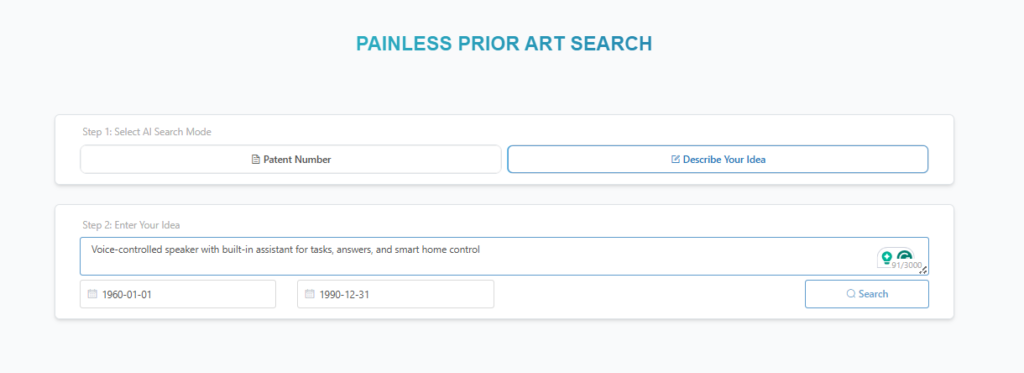
Source: GPS
With this timeframe, we wanted to capture the pre-commercial foundation of modern smart speakers. This spanned early breakthroughs in speech recognition, synthetic voice response, and remote device control, long before cloud computing or NLP assistants became viable.
Here’s what we found: a chronological list of early patents that introduced core capabilities like far-field voice input, speech-guided automation, and speaker-independent recognition. These were the bricks that built today’s always-listening, AI-powered devices.
| Priority Date | Patent Number | Title | Why It’s Foundational |
| 1979-10-04 | FR2466811A1 | System For Providing Voice Information In A Motor Vehicle | Early use of voice synthesis for real-time info delivery; core to smart assistant feedback. |
| 1981-04-16 | DE3115521A1 | Method For Remotely Controlling Electrical Or Electronic Devices | Used speech recognition for remote device control; seed for modern voice interfaces. |
| 1981-07-24 | DE3129320A1 | Speaker-independent Recognition Of Individually Spoken Words | Enabled universal voice interaction, regardless of speaker; critical for assistant adoption. |
| 1983-08-02 | JPS6031638A | Input Device Of Voice Information | Added fallback to synthetic speech if recognition failed; vital for graceful assistant UX. |
| 1983-03-25 | JPS59175265A | Interphone With Sound Recording Function | Merged speaker, recorder, and response; foreshadowed assistant call-response workflows. |
| 1985-04-01 | CN1013006B | Method And Device For Natural Language Intelligent Guidance | Enabled natural language queries; essential for conversational interfaces. |
| 1985-11-18 | GB2183976A | A Voice-activated Voice Emulation Device | Allowed voice mimicry via digital memory; early version of interactive voice. |
| 1986-09-01 | WO8801821A1 | Hands-free Telephone Configuration For Teleconferences | Introduced full-duplex speaker/mic setup; foundation for smart speaker design. |
| 1987-04-17 | JPS63260253A | Voice Response Method | Simultaneous multilingual voice output; precedent for multi-language assistants. |
| 1987-07-30 | CA1293041C | Automatic Voice Processing Assisted Customer Information System | Voice recognition + task automation; early version of smart workflows. |
| 1988-04-28 | JPH02288653A | Recording Voice Transmission System | Enabled scripted voice playback in communications; core to assistant responses. |
| 1989-03-31 | KR910006062B1 | Automatic Call Distribution Voice Guidance System | Voice-guided call routing; underpins assistant-led support systems. |
| 1989-06-02 | FI892728A | Remote Work Supervision System With Speech Feedback | Used synthetic speech for bidirectional updates; core to voice feedback loops. |
| 1990-08-27 | US5081669A | Assignable Speakers For Channels At Console | Real-time audio routing across sources; vital for multitasking assistants. |
| 1990-04-26 | JPH02284222A | Automatic Regulating Device For Voice Guidance Sound Volume | Dynamically adjusts voice volume based on context; key for adaptive assistant UX. |
As smart speakers moved from novelty to necessity, the race to dominate the space didn’t just play out in product features, but in courtrooms. Behind the sleek designs and voice commands are some of the most aggressive patent battles in recent tech history.
When Voice Tech Went to Court: The Hidden IP Fights Behind Smart Speakers
The rapid evolution of smart speaker technology has led to numerous patent disputes among major tech companies. These legal battles have influenced product designs, market strategies, and the broader industry landscape. Here are some of the most notable cases:
Sonos vs. Google
In January 2020, Sonos filed lawsuits against Google, alleging that Google had infringed on Sonos’s patents related to multi-room audio technology. This legal action stemmed from a partnership where Sonos shared its proprietary technology with Google, which Sonos claimed was later used without permission in Google’s smart speakers.
The U.S. International Trade Commission ruled in favor of Sonos in August 2021, leading to a limited import ban on certain Google devices. Subsequently, in May 2023, a jury awarded Sonos $32.5 million in damages after determining that Google had infringed on one of Sonos’ patents.
Amazon’s Patent Challenges
Amazon has faced multiple patent infringement lawsuits concerning its Echo smart speakers:
- Vocalife LLC sued Amazon in December 2020, alleging that the Echo infringed on its “Microphone Array System” patent. A jury in the Eastern District of Texas awarded Vocalife $5 million in damages.
- Flexiworld Technologies filed a lawsuit against Amazon in June 2020, claiming that Amazon’s Echo devices and related products infringed on ten of its patents. The outcome of this case is pending.
- In November 2022, State Farm accused Amazon of willfully infringing on its patent for a smart speaker tool to assist older adults. The case is ongoing, with no judgment issued.
Freshub vs. Amazon
In 2019, Freshub, a smart kitchen startup, sued Amazon, alleging that the Alexa voice-assistant software infringed on its patents related to voice-processing technology for creating and managing shopping lists. In February 2024, the U.S. Court of Appeals upheld a jury’s verdict that Amazon did not infringe Freshub’s patents, concluding a contentious legal battle.
Xiao-i vs. Apple
Xiao-i, a Chinese AI company, filed a lawsuit against Apple in August 2020, alleging that Apple’s Siri infringed on its chatbot system patent. Xiao-i sought $1.4 billion in damages. The case is currently under review.
These legal disputes underscore the competitive and rapidly evolving nature of the smart speaker industry, where companies vigorously protect their innovations and market positions.
Standards, Licensing, and IP Complexity
Smart speakers are everywhere, but unlike Wi-Fi or USB, they’re not built on a shared, open standard. There’s no global protocol like IEEE 802.11 or a licensing pool like Qi for charging. Instead, we have a fragmented market where each tech giant builds its walled garden, protected by patents and driven by proprietary ecosystems.
No Universal Smart Speaker Standard
Technologies like Bluetooth, Wi-Fi, and Zigbee are embedded inside smart speakers. However, the core experience, far-field voice recognition, NLP processing, speaker tuning, and AI assistant behaviors, isn’t standardized.
That means:
- Apple’s HomePod runs on Siri, uses spatial awareness, and is tied to iOS only.
- Amazon Echo devices use Alexa and support third-party “skills” but not Google services.
- Google Nest Audio offers deep Assistant integration but not Alexa or Siri compatibility.
- Sonos, once voice-neutral, now juggles licensing deals to include multiple assistants, sometimes dropping them due to disputes.
Each platform patents everything from microphone array layouts to on-device wake word handling, creating a landscape of overlapping but non-interoperable IP.
No Licensing Pool = No Easy Access
Unlike standards-based markets, there’s no central patent pool or consortium where startups or OEMs can easily license the necessary IP to build smart speakers. Instead, they must:
- License voice assistant SDKs (e.g., Amazon’s AVS or Google’s Assistant SDK).
- License patented acoustic tuning, connectivity, or UI components separately.
- Avoid infringing on broad software patents covering assistant behavior or user interaction.
For smaller players, this creates a minefield. You can build a speaker. But when it talks or listens, you’re deep in IP territory.
Smart speakers are no longer just about playing music or setting timers. They’re evolving into:
- Control hubs for entire smart homes.
- Health and safety tools (e.g., fall detection, breathing monitors).
- Ambient AI nodes that learn your routines and anticipate needs.
Each new feature class pulls in new patent classes: biomedical sensors, edge computing, and context awareness. Without formal licensing frameworks, every innovation is a potential lawsuit waiting to happen unless you know what’s already been filed.
So how do you map that IP terrain before you build, launch, or license?
How Global Patent Search Helps You Navigate This Tech?
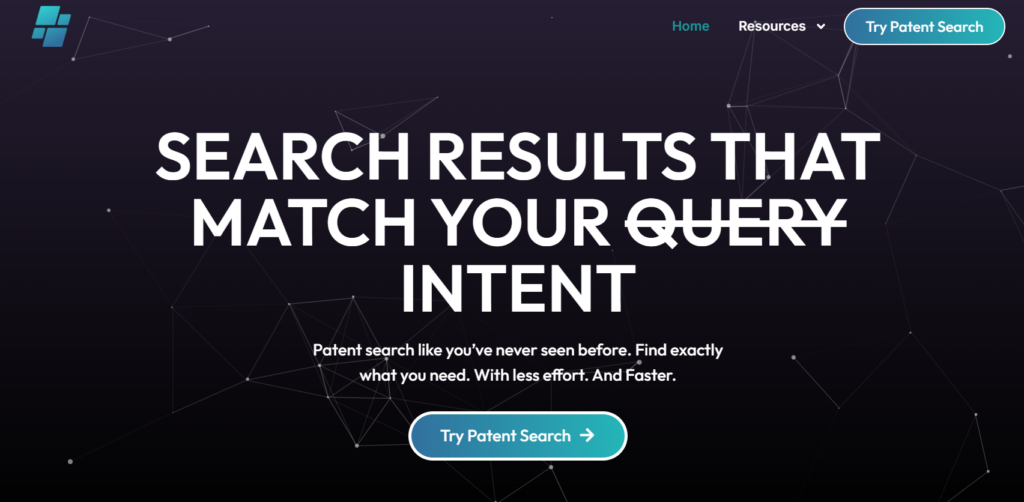
Smart speaker technology isn’t just layered; it’s tangled. One product might involve patents in acoustic beamforming, voice activity detection, on-device AI, context tracking, and wireless communication. Each of these can be owned by different players, each potentially overlapping.
That’s where AI patent search tools like the Global Patent Search tool become your edge.
Instead of starting with classification codes or law firm-level expertise, GPS lets you begin with ideas:
“A smart speaker that recognizes multiple users by voice”.
“A device that dims lights and adjusts music when a user says ‘good night’”.
“A far-field speaker that learns routines and suggests actions proactively”.
GPS maps those ideas to real patents across global databases. It helps:
- Understand who owns what, even across highly fragmented ecosystems.
- Surface prior art before you file, pitch, or launch.
- Explore overlapping claims from top innovators in domains like Sonos, Google, and Amazon.
- Validate product novelty before entering high-risk spaces like speech AI or smart home automation.
Whether you’re an enterprise product lead, a founder building an Alexa alternative, or an innovation team trying to avoid IP risk, GPS makes the invisible patent web behind smart speakers visible.
In a space where every wake word, every waveform, and every user interaction could be patented, GPS helps you move forward with clarity, not guesswork. Explore the tool now.

